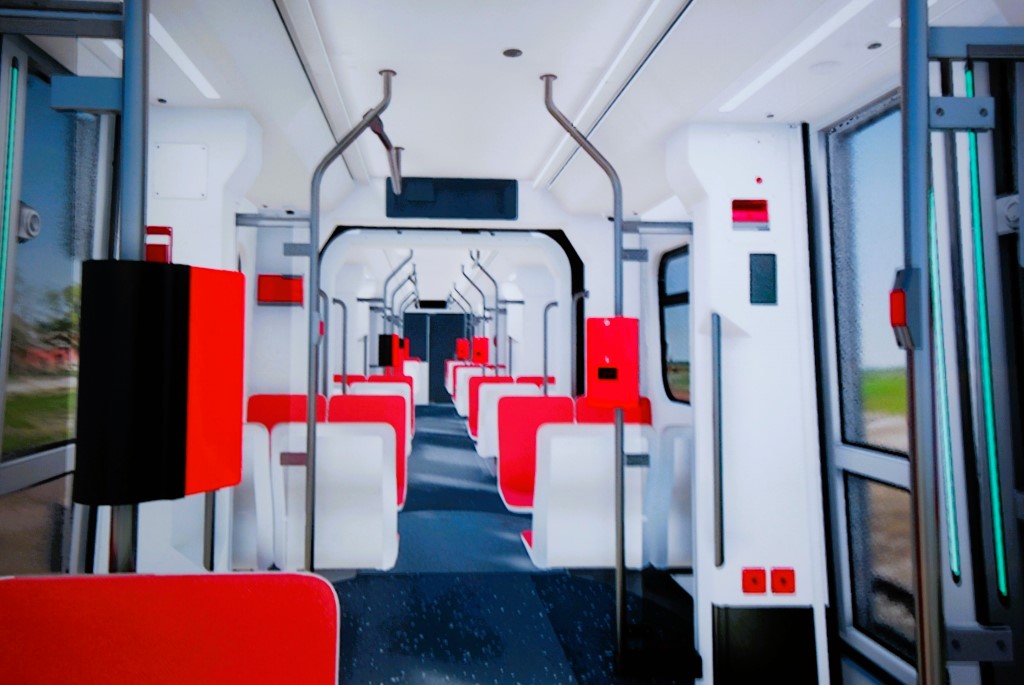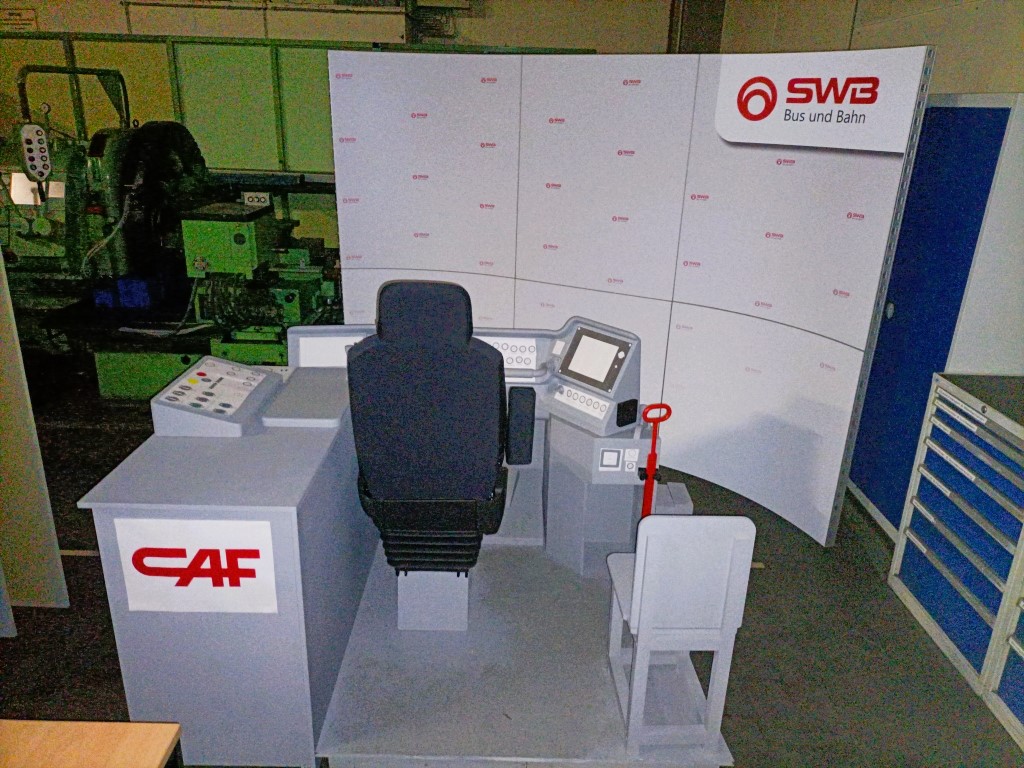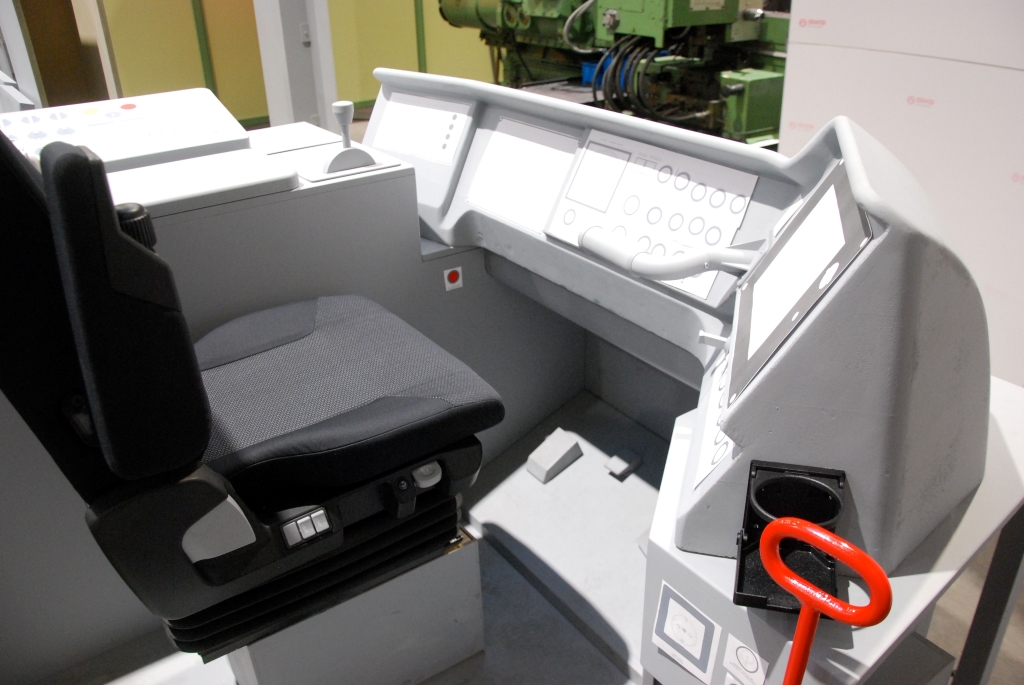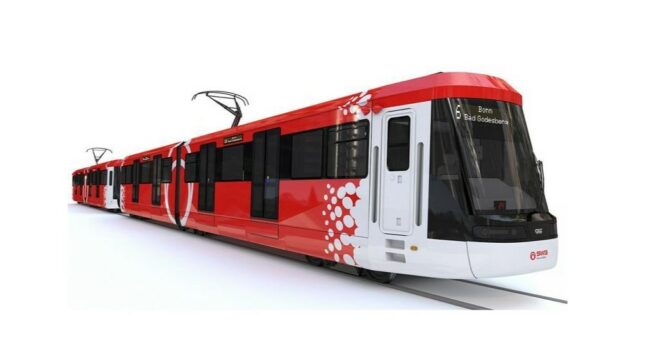
On 18 January 2023, Bonn’s local transport company “SWB Bus und Bahn” invited to the presentation of the future new light rail vehicles, the first of which CAF from Spain will deliver, if possible, from the end of 2024 (UTM reported on 22 May 2022: https://www.urban-transport-magazine.com/en/bonn-swb-and-ssb-order-22-new-light-rail-vehicles-from-caf/). The new trams have to go through technical acceptance and the drivers have to be trained on them. In the course of 2026, they can then go into regular service.
The concept of the vehicles
The 28-metre-long articulated cars will be vehicles for two-directional operation, but will only have a full driver’s cab at one head. In order to be able to run in both directions, one pair of the new light rail vehicles must be coupled to the rear of the other. So there is a driver’s cabin at the front in each direction.
However, running alone in reverse is possible: At the rear, each of them has an “auxiliary driver’s stand”. The tram can also be operated from there. During the presentation, the CAF staff emphasised that the light rail car is “fully manoeuvrable” when it is controlled from the auxiliary driving position. Not only can the driver operate this stand while standing, but a seat can also be set up – for example for longer “backwards” journeys.

At first glance, it is rather surprising that the new Bonn light rail vehicles will only have a full driver’s stand. Until now, Bonn’s SWB have always insisted that every Bonn light rail vehicle must be fully functional in both directions of travel. Which is why all of Bonn’s light rail vehicles to date have a driver’s cab at each end. However, the use of single driving railcars in the Bonn light rail network (including lines 16 and 18 to Cologne, which are jointly operated with Cologne) practically never occurs, and so SWB now believes that four additional seats for passengers instead of the second driver’s cab are more important.
The length of 28 metres meets that of the Düwag “B-Wagen” (61 units built between 1974 and 1993, some of them “second-generation”) and Bombardier “Flexity Swift” (15 units Tw 0360 to 0374) used so far. Due to Cologne’s oldest underground lines – in operation since 11 October 1968 – with their tight curve radii, only articulated cars with car sections that are relatively short are possible. Cologne’s oldest underground lines Hauptbahnhof – Friesenplatz and Hauptbahnhof – Appellhofplatz – Neumarkt – Barbarossaplatz were still planned and built for the use of eight-axle articulated tram cars in the tunnel.
Passenger seats will be installed in compartment arrangements – depending on the direction of travel – about half of the passengers will find a forward-facing seat. The ticket vending machine is located in the multifunctional area in carriage section B directly behind the door behind the joint. This is done for weight reasons, because if the ticket vending machine were installed centrally in the articulation, it would be at the same distance from both car sections, but its weight of 125 kilograms would put too much strain on the bogie under the articulation. Especially as the joint itself would have to be additionally reinforced in order to be able to anchor the automat here (see diagram).
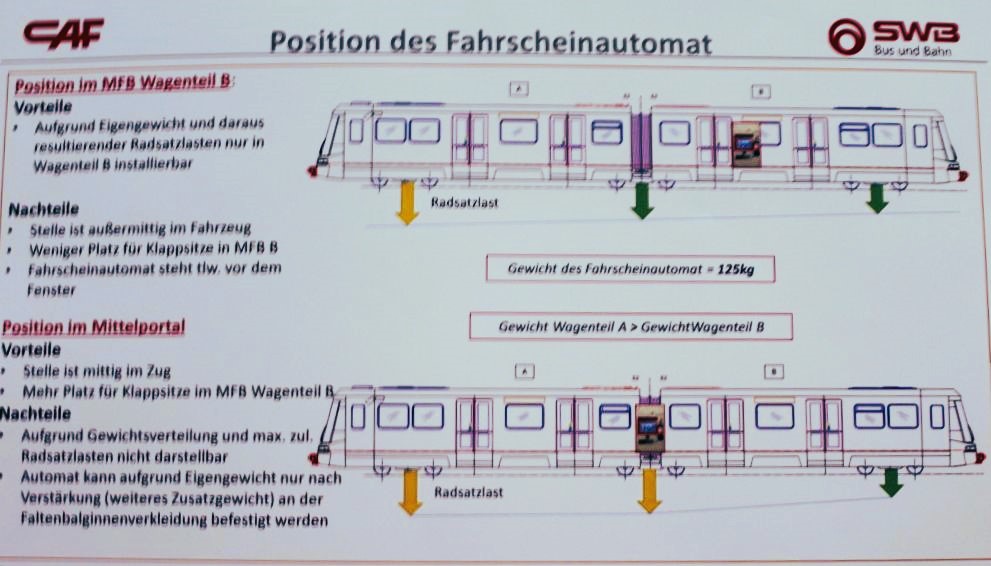
In both carriage sections, there is a multi-purpose area between the respective doors on one side of the carriage, for example for prams, wheelchairs or also for bicycles (which may be taken on the VRS), but also for standing passengers. There are folding seats along the wall in the direction of travel. Opposite, on the other side of the carriage, the passenger finds eight seats in compartment arrangement.
The seats in the rear (by the auxiliary drive switch) are in a “conference arrangement”. USB plugs for passengers are now a matter of course on buses and trains, and so Bonn’s new light rail vehicles will also have them.
The “virtual mock-up” experience
The presentation of the mock-up took place digitally – only a driver’s stand was built as a wooden model on a scale of 1 : 1. The entire vehicle, on the other hand, was offered digitally with data glasses. This gives a view of the entire future vehicle – and that is definitely to be welcomed. You can also walk through the vehicle with the data glasses on. But: you see handrails and handles that are not there. You want to hold on – and you reach into the void. Which looks rather awkward to those watching this “walk through the car” from the outside …
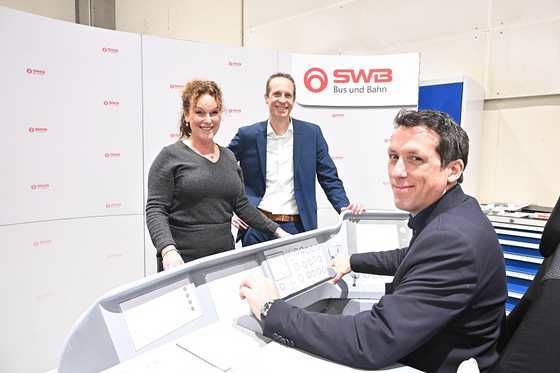
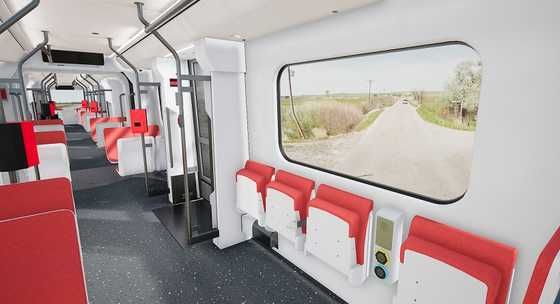
Bonn’s light rail units
At present, Bonn’s fleet of trams consists of exactly 100 vehicles: 24 low-floor tramcars plus 76 light rail vehicles. With the 28 new low-floor trams from Skoda, whose delivery is just beginning, and the new light rail vehicles, Bonn’s rail fleet will in future comprise 126 vehicles: 28 trams and 98 light rail vehicles. So the fleet is growing by 26 percent. The growth of the fleet only serves to increase the density of the current service. SWB boss Anja Wenmakers explicitly stated that the new trams do not include the “right bank Rhine railway” line 17 between Bonn and Cologne via Niederkassel. She said, “At the moment there are more important things than a light rail line 17 between Bonn and Cologne.”
CAF will deliver 32 new light rail vehicles. Both Bonn railway companies – “SWB Bus und Bahn” and the “Elektrische Bahnen der Stadt Bonn und des Rhein-Sieg-Kreises (SSB)”- will each receive 16 of the new cars.
Remark:
Both Bonn light rail operators, SWB and SSB, have different owners (SWB 100% City of Bonn, SSB 50% each SWB Bonn and Rhein-Sieg Kreis), but they were and are jointly managed by the Bonner Stadtverkehrsbetrieb (originally “Bahnen der Stadt Bonn”, today SWB).
